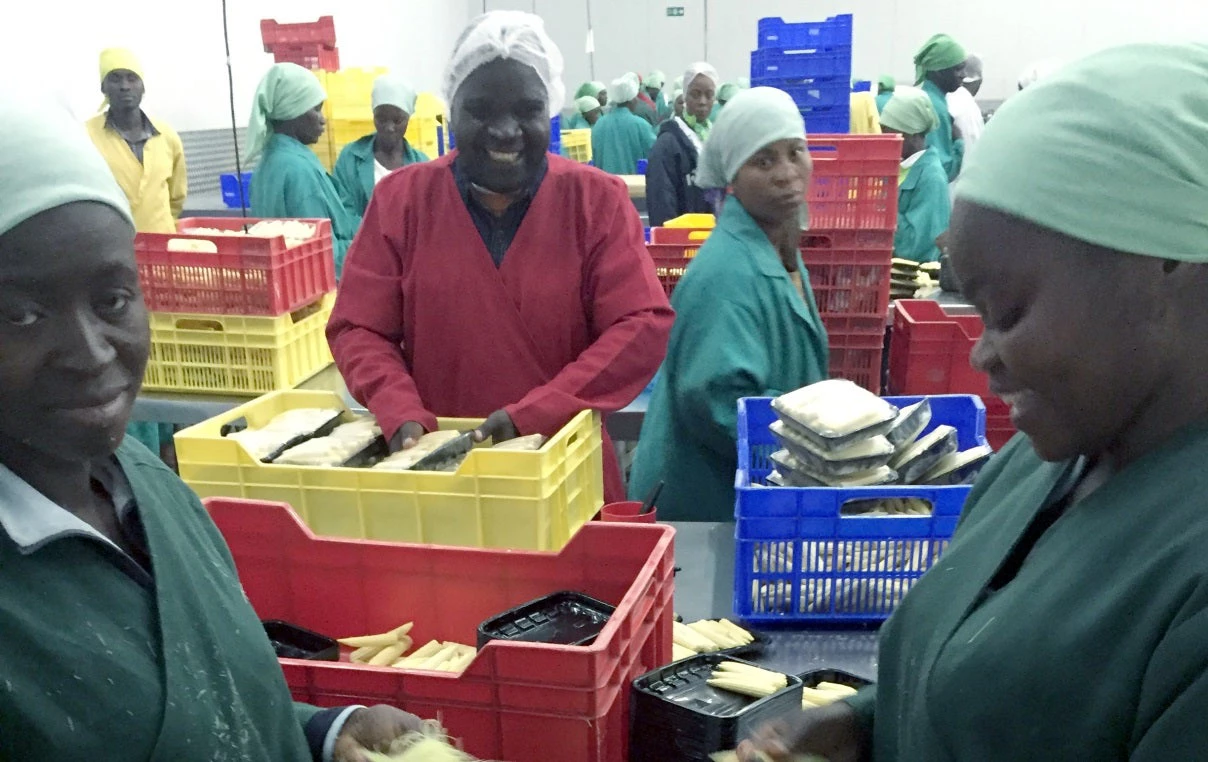
Mozambique has achieved substantial poverty reduction during the last two decades, but the existing development model is running out of steam. When the civil war ended in the early 1990s, Mozambique was one of the poorest countries in the world. Since then, it has had relatively fast growth and the poverty headcount rate has declined steadily. However, the Jobs Diagnostic produced as part of the Let’s Work Mozambique Country Pilot shows that over the last 20 years, the pattern of growth has become progressively less inclusive. In this blog, we outline four possible strategies that could help accelerate the shift into higher value-added activities and better livelihoods for the mass of low-paid workers in Mozambique.
The existing growth strategy has limited capacity to support continued poverty reduction, because it is too focused on capital-intensive extractives and megaprojects. It doesn’t focus enough on supporting investments that can improve the jobs of the mass of low-income Mozambicans. The strategy is also vulnerable to global market fluctuations, as was seen when the fall in commodity prices in 2016 triggered a sharp economic slowdown. But as the gas revenues from the northeast come on stream over the next decade, Mozambique will have a unique opportunity to shift towards more inclusive growth pattern, focused on jobs transformations for the poor.
1. Promoting inclusive growth means improving the jobs of the poor
To achieve inclusive growth, Mozambique needs better jobs for households in the bottom 40% of the income distribution. Despite Mozambique’s impressive growth performance over the last 18 years (averaging over 7% per annum) and low unemployment rates (under 3%), over 50% of Mozambique’s citizens still live below the international poverty line. Growth has reduced poverty, yet the bottom 40% of income earners has been left behind.The non-inclusive pattern of economic growth reflects a disconnect between changes in the structure of output and the structure of jobs since the mid-1990s. One of the main drivers of growth has been mining, which has attracted the most investment, but generates few jobs. Meanwhile, agriculture, where 85% of poor households earn their living, accounted for only 10 to 15% of growth in value-added over the last decade, compared to 30 to 40% during the 1990s. In other words, the sector which exhibits the most dynamism generates few jobs; while the sector which employs the most people lacks dynamism.
2. Jobs are the key to leveraging the demographic transition
Mozambique has the prospect of a “demographic dividend” in which dependency ratios fall rapidly over the next 20 years - but “cashing in” the dividend depends on generating enough good jobs to absorb the expanding labor force. Almost 500,000 people will enter Mozambique’s labor force each year over the next decade – almost double the number of the previous decade. Currently, 45% of the population is under the age of 15, and nearly two-thirds of the populations is under the age of 25. The rapid addition of young people into Mozambique´s labor force is both an opportunity and a challenge.In the right environment, a young, dynamic labor force can spur innovation and be an engine of growth, which drives up living standards. However, that also depends on investments to create the jobs they need to be productive, and infrastructure investments that make those jobs possible. A rapidly growing young population also challenges public services, such as education and health, to develop the human capital needed for productive employment.
3. Raising Labor Productivity in Agriculture and Self-Employment
Aggregator schemes are a promising option for the transformation of jobs in agriculture. For the next few decades, many Mozambicans will continue to work in self-employment – either as smallholder farmers or in non-farm self-employment (so-called Household Enterprises, HEs). In both those sectors, jobs policy should aim to increasing productivity and earnings. There is a strong case for public support to transitioning smallholders into productive activities that are better-linked to the modern economy, where productivity and earnings will be much higher.Value chain relationships between smallholder out-growers and commercial aggregators are a promising model. Such schemes can boost the productivity and earnings of independent growers across a wide range of crops and small animal products (including inter alia: cotton, sugar, maize, sesame, horticulture, chickens and goats). Many of these products have relatively low incremental investment needs per improved job.
But private agribusiness will tend to invest less in such systems than is optimal for Mozambican society. That’s because they won’t factor in the earnings gains for the smallholders (which are an externality, from the point of view of the firm). Aggregator businesses may also face capital constraints and be averse to the risks around expanding commercial relationships with new smallholders. One problem is “side-selling”, where the smallholder sells the product to a third party and the aggregator loses the inputs they supplied.
A coherent strategy to accelerate the expansion of such activities could include a package of direct financial and technical support to the expansion of contract grower schemes, which provide inputs and extension services to help smallholders to transition towards commercial farming and diversify their production. That could be coupled with support for infrastructure investments in water supply and in rural roads to provide market access, making commercial growing possible in new regions of the country.


Join the Conversation